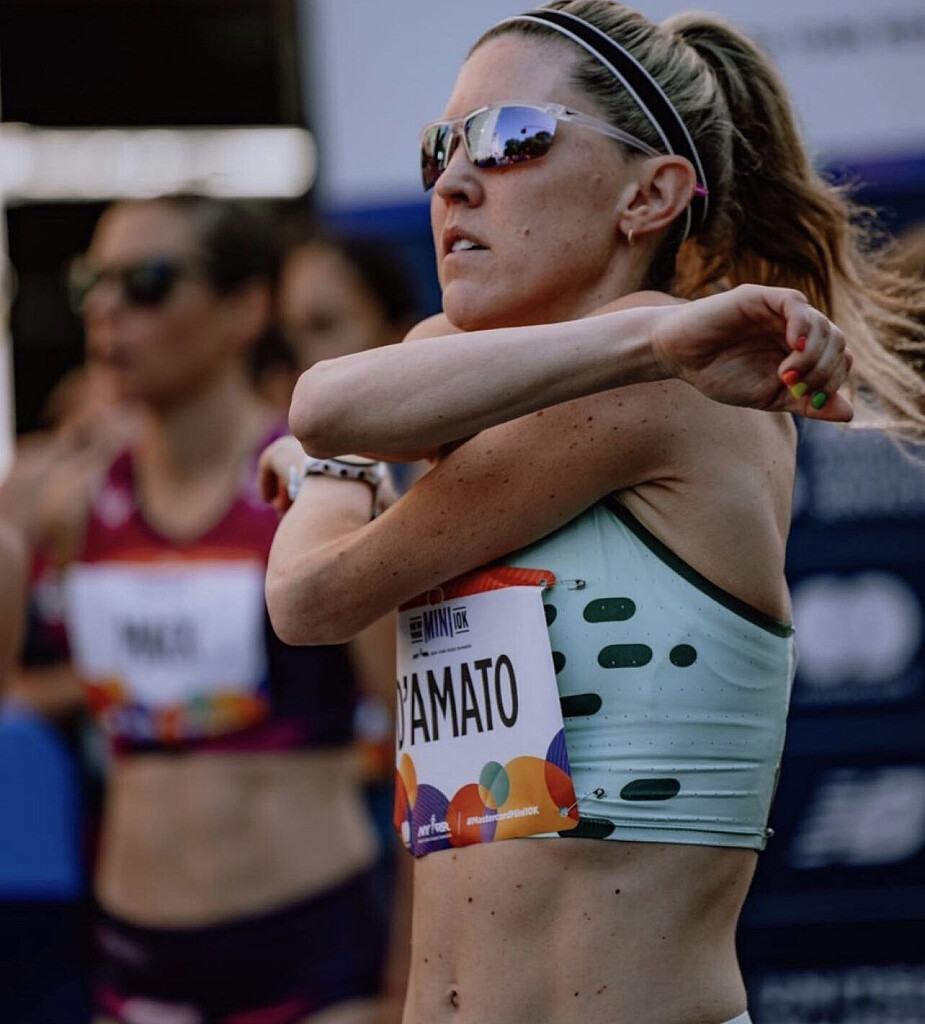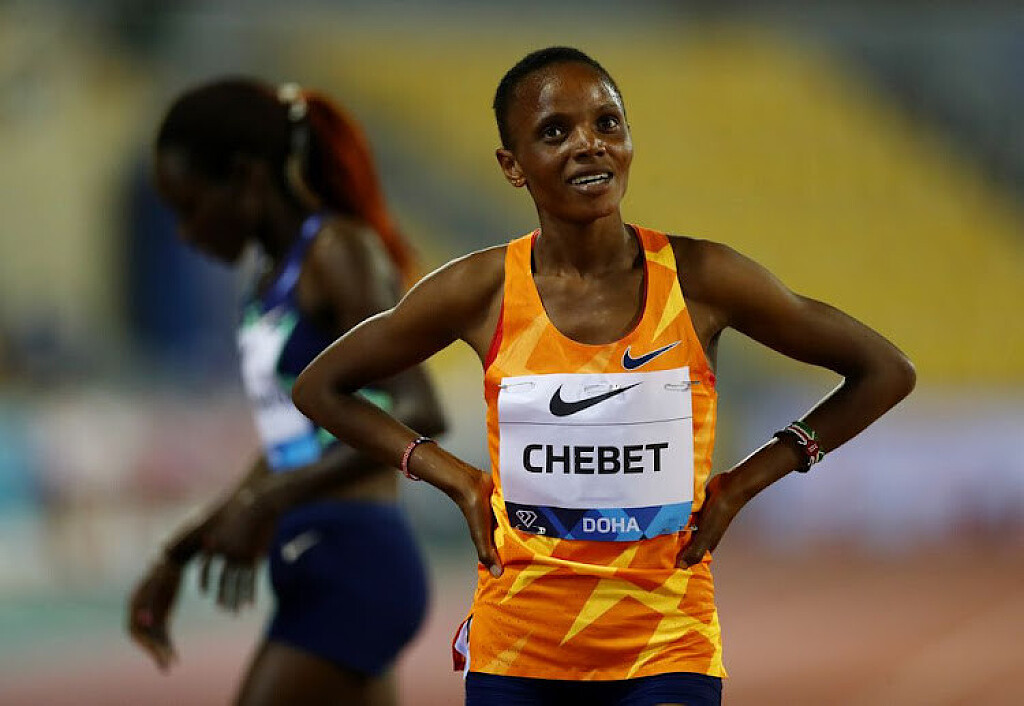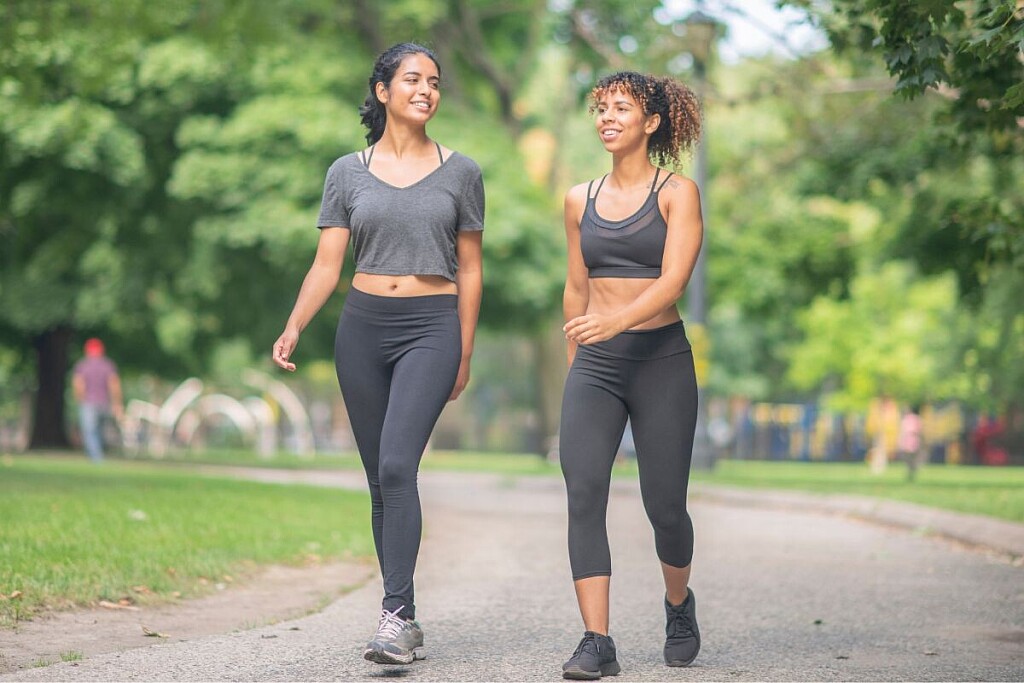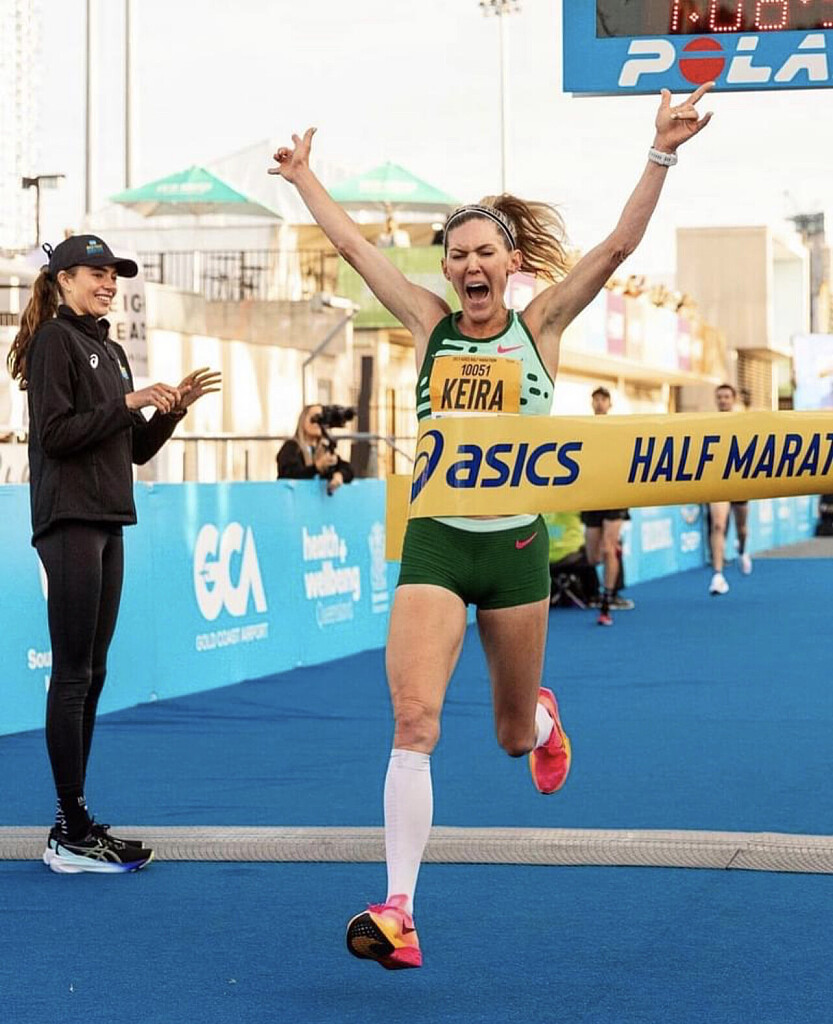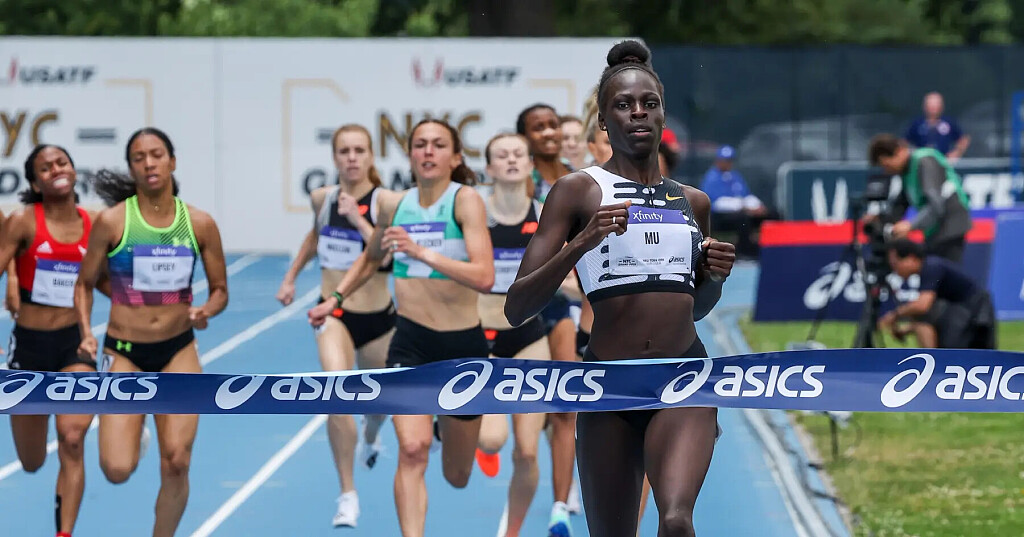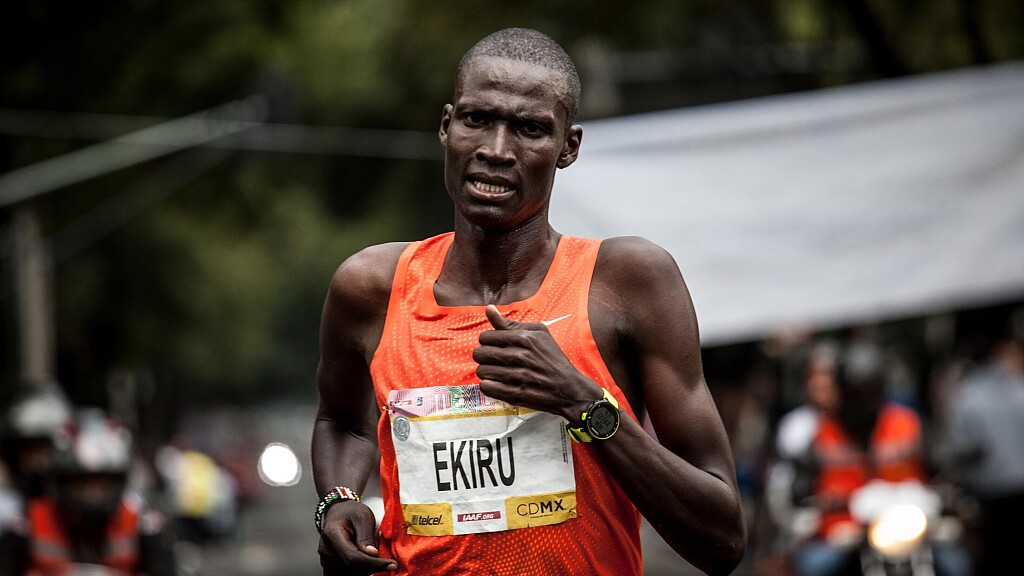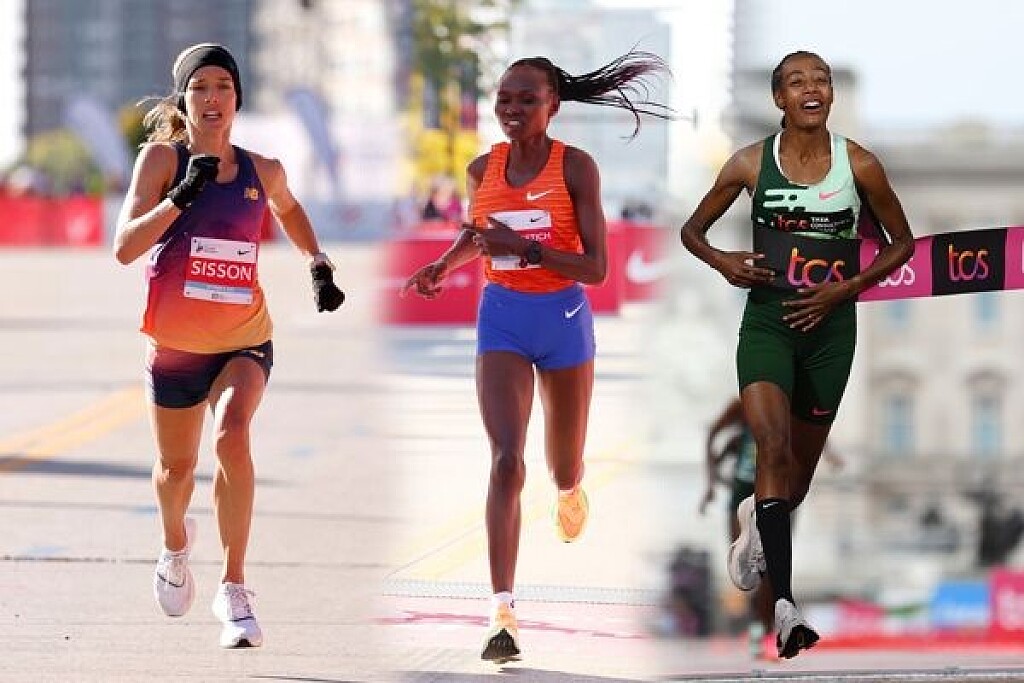Running News Daily
Top Ten Stories of the Week
7/8/2023
These are the top ten stories based on views over the last week.
Keira D’Amato Sets American Record in the Half Marathon
Keira D’Amato averaged 5:05 per mile pace and broke the American record set by Emily Sisson by 13 seconds.
Once she finally got to Australia, all the stars aligned for Keira D’Amato.

On July 1, she ran the Gold Coast Half Marathon in 1:06:39 and broke Emily Sisson’s American record by 13 seconds.
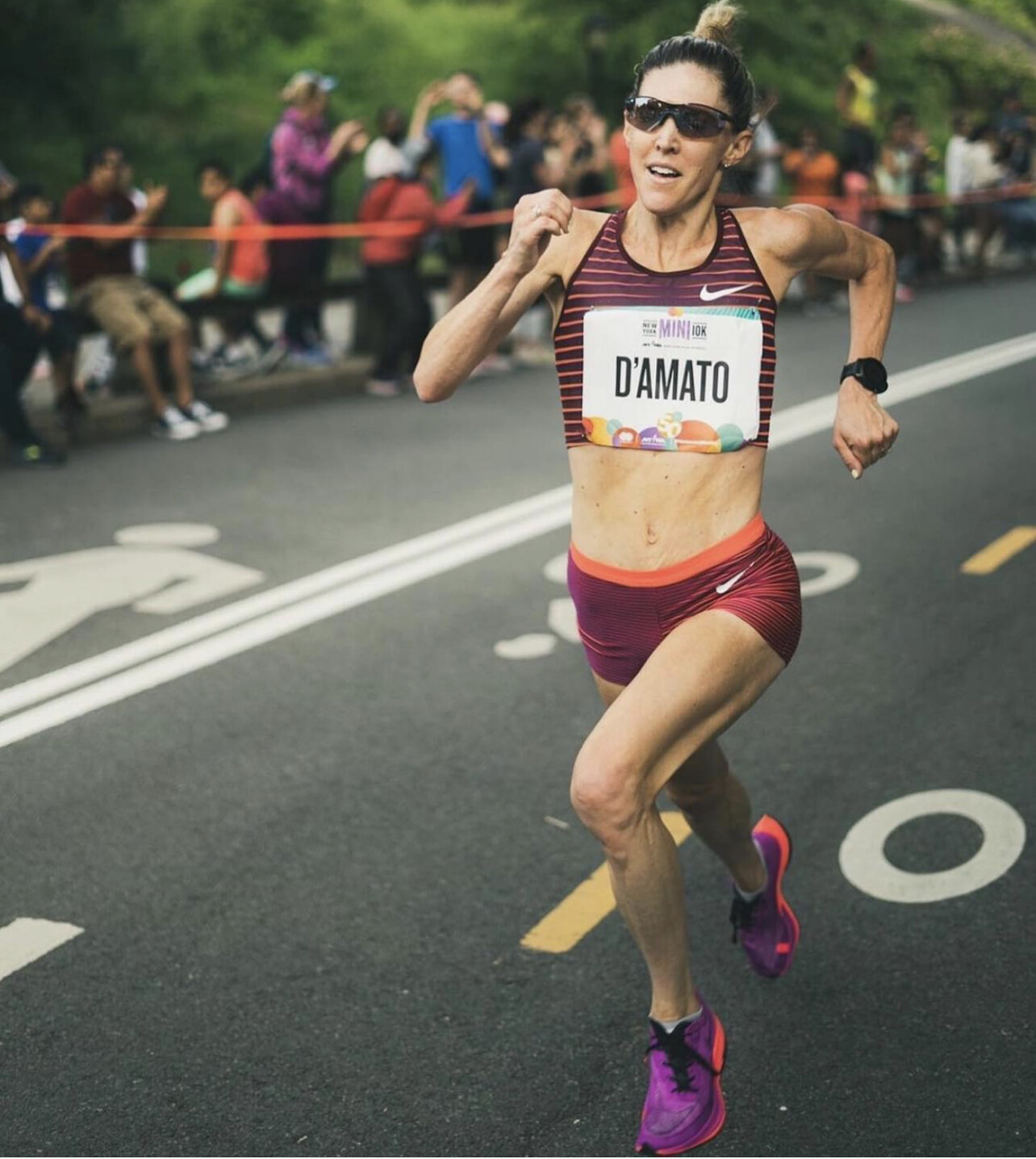
In perfect conditions—temperatures were 50 degrees with just a touch of wind from the west—D’Amato, 38, ran behind a pacesetter on the flat course and averaged 5:05 per mile.
Getting to Oz, however, was full of travel challenges. D’Amato’s flight from her home in Virginia on Sunday was delayed and then canceled. The same happened on Monday. When she finally made it to Los Angeles, she missed her connection, had to spend the night (and do a track workout in there, according to her Instagram).
Once in Australia, D’Amato soaked up the cheers from the local fans.
“The crowds were amazing,” she said in a post-race interview on the race broadcast on YouTube. “Being from another country, hearing my name all over course, it made me feel so powerful today.”
Meanwhile, the back-and-forth duel between Sisson and D’Amato over American records continues.
D’Amato held the American record in the marathon from January 16, 2022, until October 9, 2022, when it was broken by Sisson.
Sisson held the American record in the half marathon from May 7, 2022—until D’Amato broke it.
Emily Sisson posted on Twitter;
Congrats @KeiraDAmato on breaking the U.S. women’s half marathon record today! It’s awesome to be a part of this era of U.S. women’s distance running where records are continuously improving. Especially impressive considering your travel—enjoy the moment Keira.
D’Amato’s next marathon will be at the World Championships in August in Budapest, Hungary.
She makes it clear with every interview that she’s enjoying her return to elite running after 10 years off and having two kids.
“I think when I first came back into running, it was for me,” she said during the post-race interview. “Somewhere along the way, it turned into a we. Doing this for all of us that think, ‘We’re too busy’ or ‘We’re too old.’ Or too whatnot. Feeling people cheer for me, I felt like they were part of my journey.”
(06/30/23) Views: 328Runner’s World
Why Are Runners Suddenly So Fast?
Records are falling and times are dropping. Is it the shoes, or something else?
Consider the Paris Diamond League meet in early June. Jakob Ingebrigtsen smashed the two-mile world best by more than four seconds, becoming just the second man to run back-to-back sub-four-minute miles. Then Faith Kipyegon notched her second world record in a row, outsprinting the reigning record-holder over 5,000 meters just a week after becoming the first woman under 3:50 in the 1,500 meters. Then, to cap the night, Lamecha Girma took down the steeplechase record.
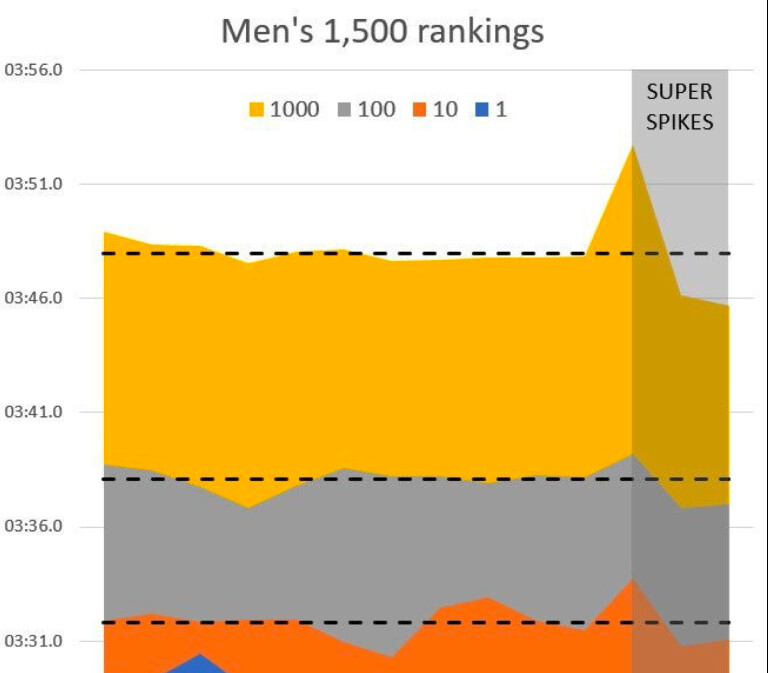
It was a great night—but it was just one of many great nights that track fans have been treated to recently. A week later, at the historic Bislett Games in Oslo, eight men broke 3:30 for 1,500 meters in one race, setting a new record—including Yared Nuguse, who set a new U.S. best. Meet records fell in almost every event. At the collegiate level, an analysis by Oregon-based coach Peter Thompson shows that the number of middle- and long-distance runners hitting elite benchmark times has doubled, tripled, or in some events even quadrupled in the last two years. Earlier in June, four high-school boys broke four minutes for the mile in a single race, matching the total number of people who’d done it in history prior to 2011.
I could go on.
There are two main questions that arise from this buffet of speed. First, is it real? Are runners getting faster across the board, or are we just being fooled by the brilliance of a few individuals and random fluctuations in the depth of different events? Second, if it’s really happening, then why? The easy answer is, “It’s gotta be the shoes” (or, in this case, the super spikes), but does the data really back that up?
I don’t have any definitive answers at this point, but here are my thoughts on some of the possible explanations.
It’s easy to make an anecdotal case that runners are faster than ever. Backing that up with data isn’t quite as straightforward. If you look only at whether the top-ranked time in the world is getting faster or slower from year to year, any trends will depend on whether you happen to have a generational athlete in the event at a given point in time. The effect of an Usain Bolt is bigger than the effect of, say, a new shoe design. Even if you go deeper, the top ten times in any year often come from just one or two races that took place in exceptionally good conditions. So you’re better off looking farther down the list.
For example, here’s some data for the men’s 1,500 meters between 2009 and 2022, drawn from the World Athletics database. I’ve shown the first, tenth, 100th, and 1,000th ranked performers (not performances) for each year. The horizontal dashed lines show the average for 2009 to 2018. The first super spike prototypes had shown up on the circuit by 2019 at latest, and were widely available by 2021. The big spike of slower times in 2020 is because there were so few races due to the pandemic.
The number-one times don’t show any particular trend. The tenth-best times show a dip since 2021, but no bigger than the dip in 2014-2015 (which corresponded to two particularly fast races in Monaco). For the 100th and 1,000th best times, the pre-pandemic data finally starts to look more consistent, which makes the dip since 2021 more telling. The 1,000th-best performer is now 0.9 percent faster than the pre-pandemic average, and the 100th-best is 0.5 percent faster. This is smaller than the 1.3-percent estimate derived from lab testing of super spikes, but in the ballpark.
Here’s comparable data for the women’s 5,000 meters:
Again, the first- and tenth-ranked times fluctuate too much to draw any conclusions. The 100th and 1,000th places do show an apparent drop in the last few years, by 1.9 and 2.0 percent respectively—more than the lab estimate. There are lots of possible explanations for this discrepancy, including that the benefits of super spikes are reduced at faster speeds.
I’ll add one more graph just for context. Supershoes came to road running way back in 2016 (for prototypes) and became widely available by 2018. I think most observers agree that these shoes really have affected road-running times. So what does the comparable data show for, say, men’s marathon times? Here it is:
The data is confounded by the effects of the pandemic, particularly in 2020. Still, the post-supershoe improvement looks fairly similar to the track data. Compared to the 2009 to 2016 average, last year’s times were 0.7 percent faster at tenth, 1.6 percent faster at 100th, and 1.3 percent faster at 1,000th.
The conclusion I take from all this data? It does like there’s something going on, both on the track and on the roads. But it’s way less obvious in the data than I expected. My subjective feeling was that the last few years have seen records broken and times redefined at a totally unprecedented rate. I thought I’d see robust improvement of at least three or four percent. But that scale of change is not there, at least in the events I sampled.
So with that in mind, what explains the changes we do see?
My starting assumption is that any performance improvements we’ve seen in the last few years are because of the shoes. I’m not going to belabor that point here, because I’ve already written plenty on both road supershoes and super spikes.
But I do want to make one key point. The reason my prime suspect is the shoes is that we have direct laboratory evidence that both types of shoes improve running economy, by around 2 percent on the track and at least 4 percent on the roads (and, to complete the circle, lab evidence that improved running economy directly translates to faster race times). It would take some weird and hitherto undiscovered science in order for the shoes not to make us faster. In contrast, the other hypotheses that I’m going to discuss below may be compelling to various degrees, but all rely on some assumptions and guesses and hand-waving.
Here’s a sentence you wouldn’t have read prior to 2018, from Letsrun’s description of Kipyegon’s thrilling 1,500 world record in Florence: “Kipyegon sprinted away from the pacing lights with 200m to go, lengthening her gap from the green lights as she rounded the turn and entered the home straightaway.” I wrote about World Athletics’s introduction of Wavelight pacing lights when Joshua Cheptegei set the 5,000-meter world record in 2020, positing that more even splits could make a notable difference to times. Good pacing has been a hallmark of this year’s records too, all assisted by Wavelight.
Wavelight doesn’t factor in on the roads, but ever since Eliud Kipchoge’s sub-two marathon exhibitions, big-time marathons have devoted more attention to providing top-notch pacers for their elite runners. That has the double benefit of saving the mental effort of setting the pace, and of reducing air resistance. I think good pacing and drafting are both beneficial. But that can’t explain why the 100th and 1,000th performers seem to be getting faster, because Wavelight and paid rabbits are generally reserved for the front of the pack.
Freed from the tyranny of over-frequent racing during lockdowns, runners spent 2020 building up a massive base of endurance that has catapulted them to new levels. It’s even possible that, having learned their lesson, they’ll continue with this more patient approach to training. This theory has the disadvantage of being both unprovable and unfalsifiable. That doesn’t necessarily mean it’s untrue, but if performance levels don’t start regressing to their pre-pandemic means over the next few years, I’ll remain skeptical.
It’s the “big, sexy thing” in endurance training these days, as miler Hobbs Kessler put it in a recent interview: lactate-guided double-threshold training, as popularized by Norwegian Olympic champions Jakob Ingebrigtsen and Kristian Blummenfelt. As I explained in this article, the approach emphasizes high volumes of threshold training with very tight control on the intensity to avoid going too hard. Whether it’s objectively better than other training approaches remains to be seen—but it hasn’t yet been adopted widely enough to make a noticeable impact on the top-1,000 list.
In the past, when I’ve looked at broad trends in performance over time, one of the first factors I’ve considered is changes in drug availability or drug testing. It’s extremely noticeable (though of course not proof of anything) that long-distance track times took off like a rocket shortly after the introduction of EPO in the early 1990s. If you look carefully, you can find what seems to be the performance signature of various drug-related events like the introduction of EPO testing and, more recently, the implementation of athlete biological passports.
Is there something new on the scene over the last few years? Or are we still seeing the effects of pandemic-related disruptions in out-of-competition drug testing? I certainly hope it’s not the case, but you’d have to be amnesiac to discount the possibility entirely. Once again, the best counterargument is that the performance improvements are noticeable even at the 1,000th-best level—though perhaps I’m being naive.
As you can probably tell, I don’t think any of the alternative explanations I’ve offered so far hold water compared to my default assumption that it’s the shoes. But this last category is a little different. If you spend enough time arguing with people about why runners are getting faster, you’ll encounter a number of broad, hand-waving theories that are hard to substantiate but nonetheless sound reasonable.
For example, I can attest to the fact that the Internet has made training knowledge far more widely accessible than it was when I was a young athlete in the 1990s. Ideas and approaches (like the Norwegian model) are endlessly debated and dissected, and any student of the sport is exposed to multiple perspectives. (In contrast, when I arrived at university and found that the workouts were different from those I’d done in high school, I thought the world was ending.) This theory has been offered frequently over the last decade or more as an explanation for steadily improving U.S. high school times. Maybe it’s true more broadly: people everywhere simply know more about the principles of training, and are doing it better (or at least fewer people are doing really stupid training) compared to the past. Even if elite coaching was always pretty good, this creates a wider pyramid of prospective talent feeding into the elite coaches.
I also have the sense that the pendulum has swung away from sit-and-kick racing towards aggressive front-running. After the 2019 world championships, where super spikes first made headlines, I wrote an article about the unusually fast early paces of the races. Jakob Ingebrigtsen, the current king of the 1,500, is notable for running from the front and pushing the pace rather than relying on a finishing sprint—which likely helps explain why he led those seven other men under 3:30 in Oslo. If runners these days are more focused on running fast times rather than trying to win sprint finishes, it stands to reason that times would get faster overall.
And there are plenty of other theories out there—broader support for professional training groups, better nutrition and recovery, the inevitable march of progress, and some that I’ve undoubtedly missed completely. As I said at the top, I don’t know the answers, and I don’t think anyone else does either. Times do seem to be improving, but not as much as I would have guessed based on all the hype about recent record-breaking. The shoes almost certainly play some role—but if there’s some other secret sauce in there, it’ll be fun trying to figure out what it is.
(07/01/23) Views: 281Outside Online
Kenyan Beatrice Chebet eyes podium finish in Budapest after Stockholm victory
The world cross country champion Beatrice Chebet has her eyes trained at setting a personal best and a podium finish in the 5000m race in world championships in Budapest, Hungary next month.
Chebet's sentiments come on the back of winning the Diamond League meet in Stockholm on Sunday where she cut the tape in a time of 14:36.52.
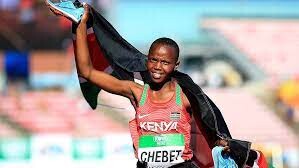
"My main goal now is the new PB at 5000m, so maybe in London, if the conditions are good, I can try to do it. My body is in perfect shape so anything is possible,” said Chebet in a post-race interview.
The world silver medalist turned up the heat in the final lap beating the Ethiopian duo of world indoor 3000m champion Lemlem Hailu (14:38.06) and 18-year-old Medina Eisa (14:40.02) to second and third respectively.

This was the second consecutive Diamond League victory for Chebet following her 3000m triumph in Oslo, Norway on June 15.
The 23-year-old said she was undeterred by the wet weather conditions at the Olympic Stadium.
‘The first thing was to get the win. The second was to fight the tough conditions. Yes, the weather was not really good but you need to run in any conditions. It was not easy to finish the race,” she added.
On the World Championships she said: "I am already thinking about Budapest where my main target is to get on the podium in my specialty."
(07/03/23) Views: 150
Samuel Nganga
How Running Can Help You Effectively Lose Weight
Weight loss is a major topic around the globe; with summer just around the corner, many people are hoping to get beach ready in a short space of time.
You can speed up your weight loss by taking up a particular sport: running. Though walking can help burn calories, a study revealed that runners can achieve 90% greater weight loss per energy expanded when they’re running. As such, people who want to achieve quick weight loss can benefit from running compared to walking regularly.
There are many reasons why running can help you lose excess weight in a fast manner. To illustrate, here are a few reasons why running can help you achieve your desired weight:
Running can complement the effects of your weight loss diet
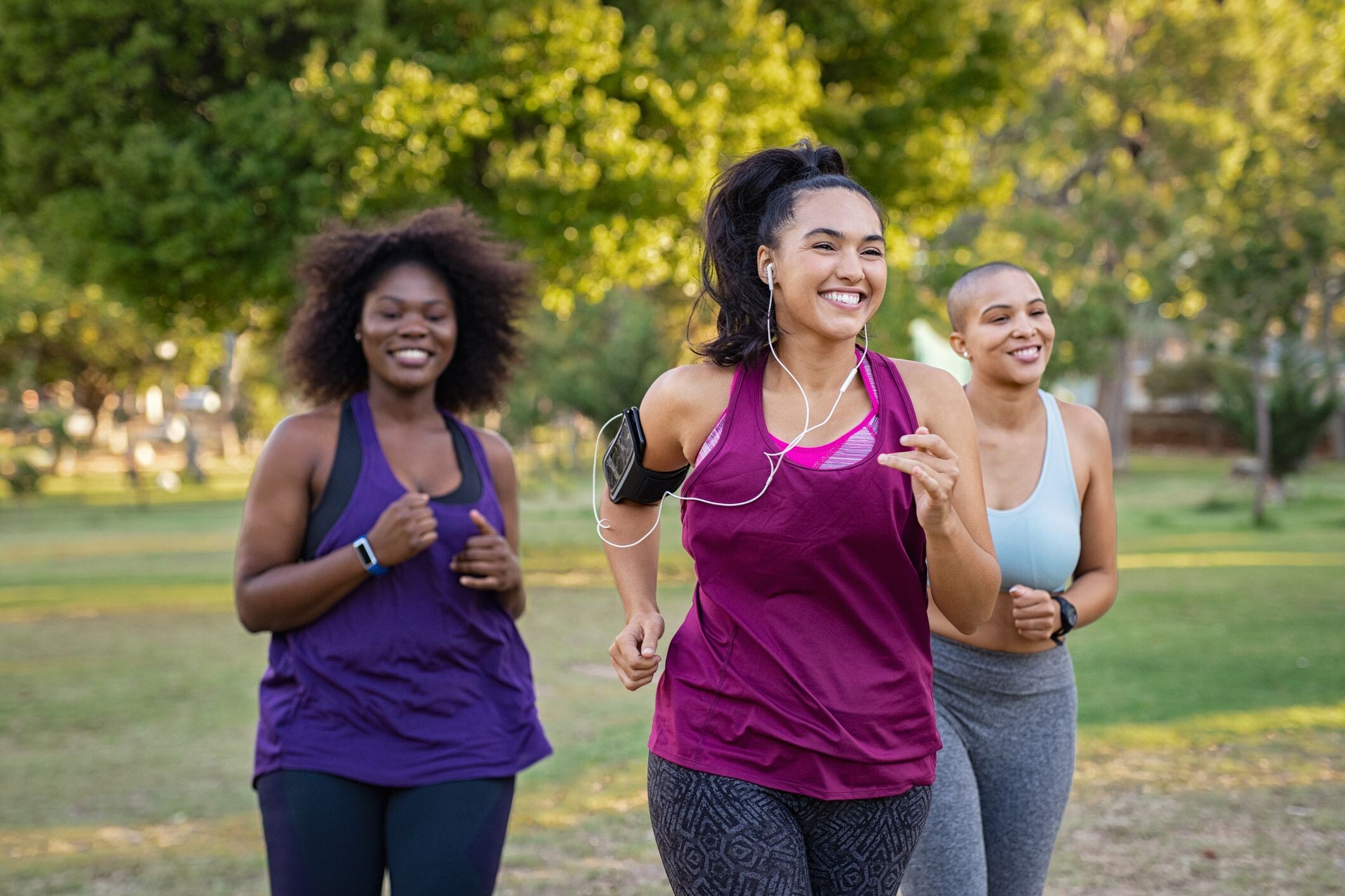
As previously mentioned, running is a physical activity that can burn calories quickly. Due to this effect, dietitians consider it as a good strategy to combine with a healthy weight-loss diet.
Registered dietitian Natalie Rizzo explains that running is a good workout to include in a weight loss routine because it burns excess calories in your body. However, Rizzo emphasized that your running routine must go hand-in-hand with good nutrition because the food that you eat causes excess calories in the first place. Thus, you need to combine exercises like running with a proper diet to be able to minimize your calorie intake and make it easier to burn all the excess calories.
You can switch up your routine to burn calories more effectively
There are various types of running routines that you could do to lose weight. So if you want to burn more calories, you can simply adjust your routine now and then to increase the effects of your workout. In fact, running coach Chris Coggins explains that you should be running fast and running far to maximize the amount of weight that you’re losing. Switching up your routine is crucial because high-intensity runs can torch your calories better and give you that after-burn effect, while slower runs over long distances can target your fat better. Coggins suggests switching between the two approaches to reap both effects and avoid any plateaus from the routine.
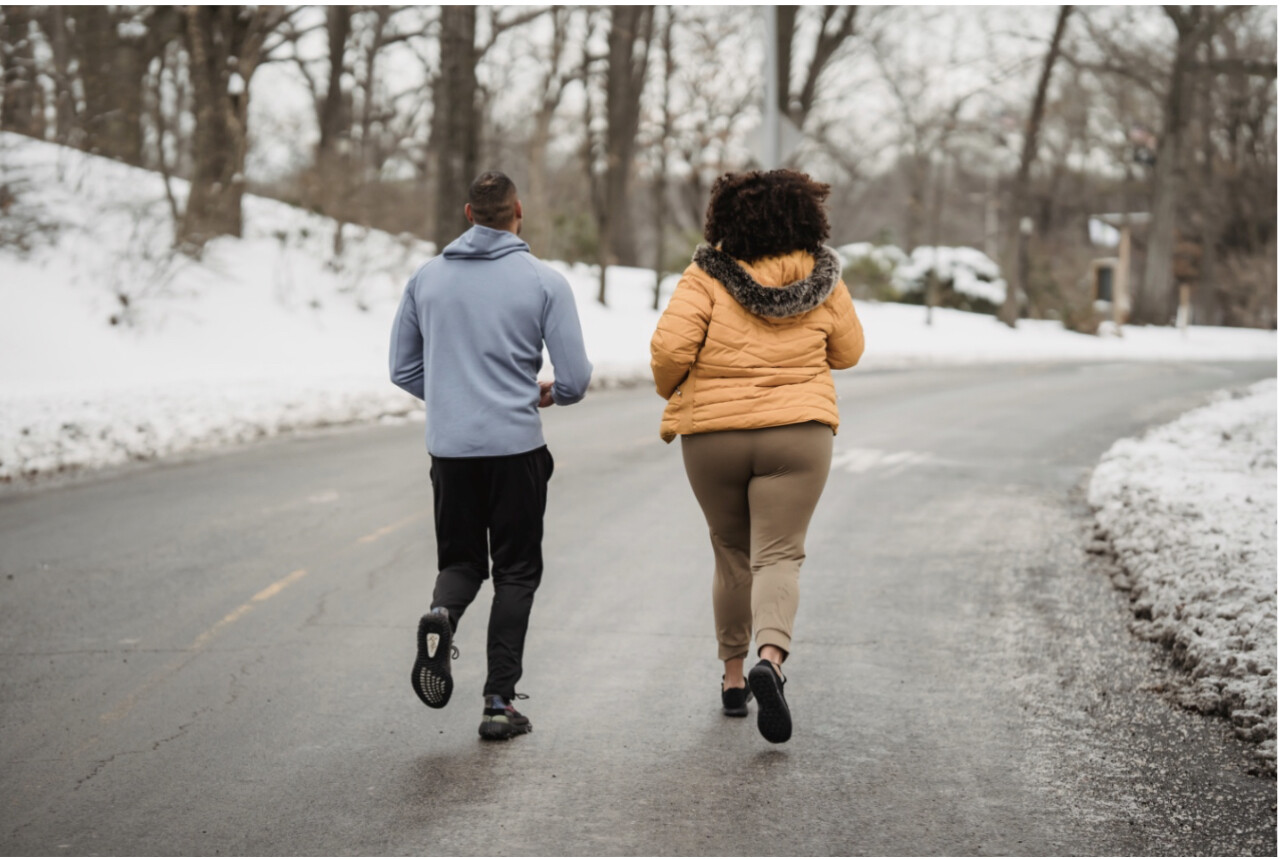
Your running goals can serve as motivators for weight loss
It’s very common for people to lose their motivation for weight loss over time. Unfortunately, it’s easy for motivation to wane, especially if you are only focusing on weight loss as your sole goal. As such, it’s important to boost your motivation for weight loss by setting goals that are related to an activity that makes you want to get out there and move. Research shows that people are more likely to stick to a fitness routine if they’re motivated by internal rewards, which is why it’s crucial to set goals that are related to your running routine. To illustrate, you can focus on aiming for certain distance goals or prepare for a specific race to motivate yourself to run every day and lose weight in the process.
Serious runners are more likely to adopt healthy behaviors
There are more benefits that you can reap from setting running-related goals. These goals may encourage you to pick up healthier lifestyle habits, which can further contribute to your weight loss. Often people who fall in love with a running practice end up adopting healthy behaviors that can help them improve their fitness performance. To illustrate, they may start sleeping more to have more time for morning runs or load up on nutrient-rich foods to get more energy for their routine. Though these healthy habits are mostly for one’s running practice, they can improve your health and lower your weight in the process.
Running can help you lose weight, especially if you do the practice right. As such, you need to learn more about the practice to be able to burn any excess calories more effectively.
Keira D’Amato tells us more about her new Half Marathon American record
(On July 1 Keira D'Amato clocked 1:06:37 at the Gold Coast Half Marathon setting a new American record. This is her story as it unfolded posted on FB)
I don’t know why this post has been so tough for me to write. There was so much emotion in my reaction to crossing the finish line and I think it boils down to one thing: hope.
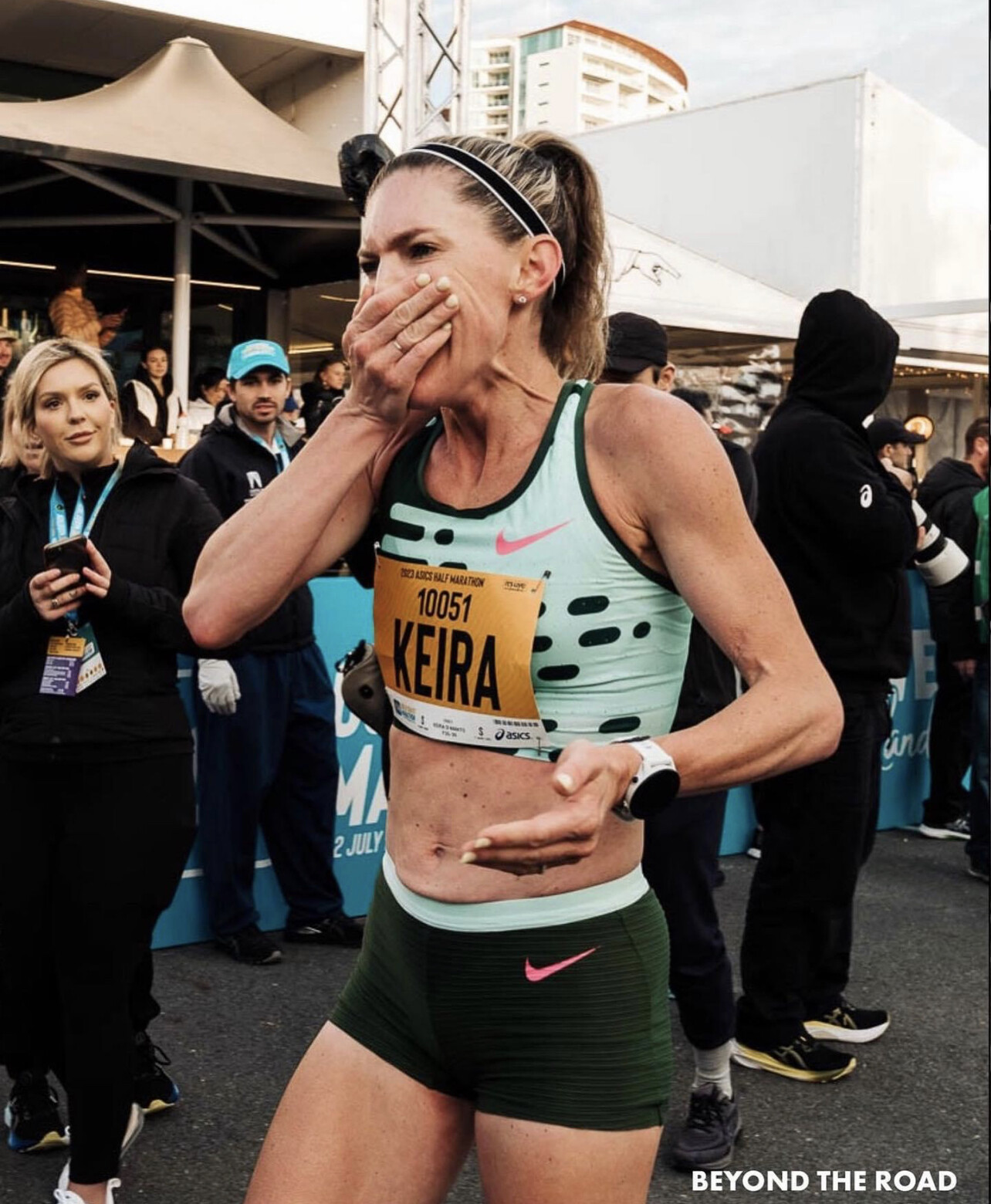
Earlier this year, I was injured, I had to scrap my spring racing plans, but I was in the pool everyday hoping it would heal so I could get back to my goals.
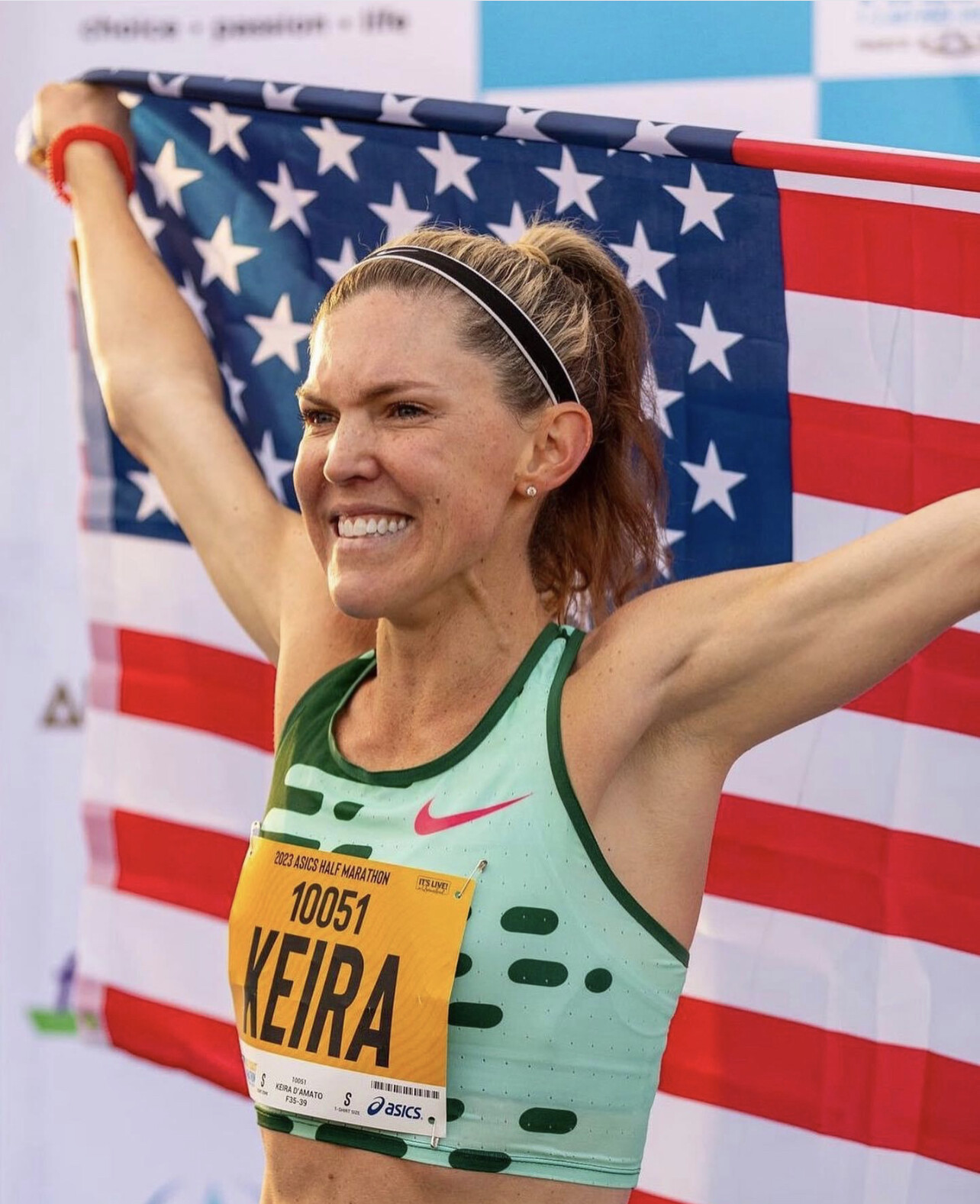
Once I was healthy, the year started off slow. It always does when you are starting something. It takes a few months for me to really start feeling like my buzzsaw self. I had hope that if I stayed patient, I could build back to an even higher level.
My flights got cancelled, and delayed, and cancelled again. But I hoped if I pushed through the travel, I would make it to the starting line.
My daughter wasn’t exactly thrilled I was going to away for a week. That stings the heart. But I hoped, I could show her what it is to chase a dream and why the family has worked to hard to support my running.
I hoped for good enough weather, I hoped my legs would feel good enough despite the travel, and I hope I could find sometime new within myself, that I wasn’t even certain was there.
Then, with about 100 or meters to go, I saw the clock and all that hoping was actually coming true. We all know it doesn’t always workout like that. In fact, most of the time, it feels like it doesn’t. But on Saturday, July 1 in Australia at the @gcmarathon half marathon it did for me.
So that’s why I look crazy crossing the finish line.
I hope everyone has an excuse to make a crazy face like this too. Here’s to hoping. ❤️
Photos by: @caseysims_ and @beyondtheroad
(07/04/23) Views: 119Keira D’Amato
2023 US Outdoor Track and Field Championships preview from Chris Chavez
Last night was the deadline for athletes to declare their event for the 2023 U.S. Outdoor Track and Field Championships, which will take place in Eugene from July 6-9. At USAs, athletes are allowed to enter multiple events and then make a decision about which event(s) they wish to contest once entries are in, which allows those who’ve achieved multiple qualifiers to be strategic about where they want to concentrate their efforts. The top three in each event who meet the qualifying standards for the World Athletics Championships will go on to represent the United States in Budapest in August.
Reigning World champions have a “bye” to the next year’s Worlds, which means the country they represent gets to send four athletes, not three. Similarly, reigning Diamond League and World Athletics Continental Tour champs earn a bye, but if there is both a World and other champion in the same event, their country still only gets to send one extra athlete.
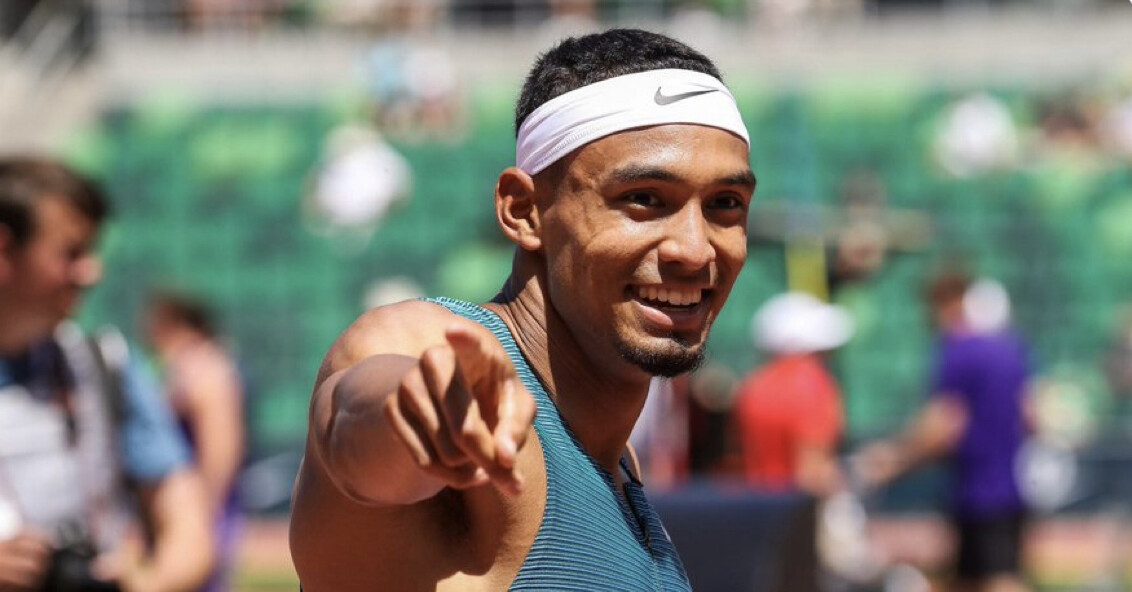
These complex rules lead many American World champions to make interesting choices about what events they wish to contest at USAs and how hard they want to push while still in the middle of the championship season.
MEN’S SPRINTS
– 100m world champion Fred Kerley has the bye to the world championships and will only run the 200m. Last year, he qualified for the World Championships in the 200m with a third place finish behind Noah Lyles and Erriyon Knighton. He injured his quad in the semifinal of the 200m and was unable to run the 4x100m relay for Team USA. Kerley has a season’s best of 19.92 from his win at the Doha Diamond League.
– 200m world champion Noah Lyles has the bye to the world championships and will only run the 100m. He ran a season's best of 9.95 in his outdoor opener in April. The last time he ran the 100m at a U.S. Championship, he finished seventh at the 2021 U.S. Olympic Trials final.
– 400m world champion Michael Norman is declared for the 100m and 200m at the U.S. Championships. He ran a wind-aided 10.02 (+3.0m/s wind) at the Mt. SAC Relays in April. He has not raced since a last place finish in the 200m at the Doha Diamond League in 20.65 on May 5.
WOMEN’S SPRINTS
– Sha’Carri Richardson is running the 100m and 200m. She is looking to qualify for her first World championship team. Her season’s best of 10.76 from her victory at the Doha Diamond League is the second-fastest performance in the world this year. Her season’s best of 22.07 from the Kip Keino Classic at altitude in Nairobi is No. 4 on the world list.
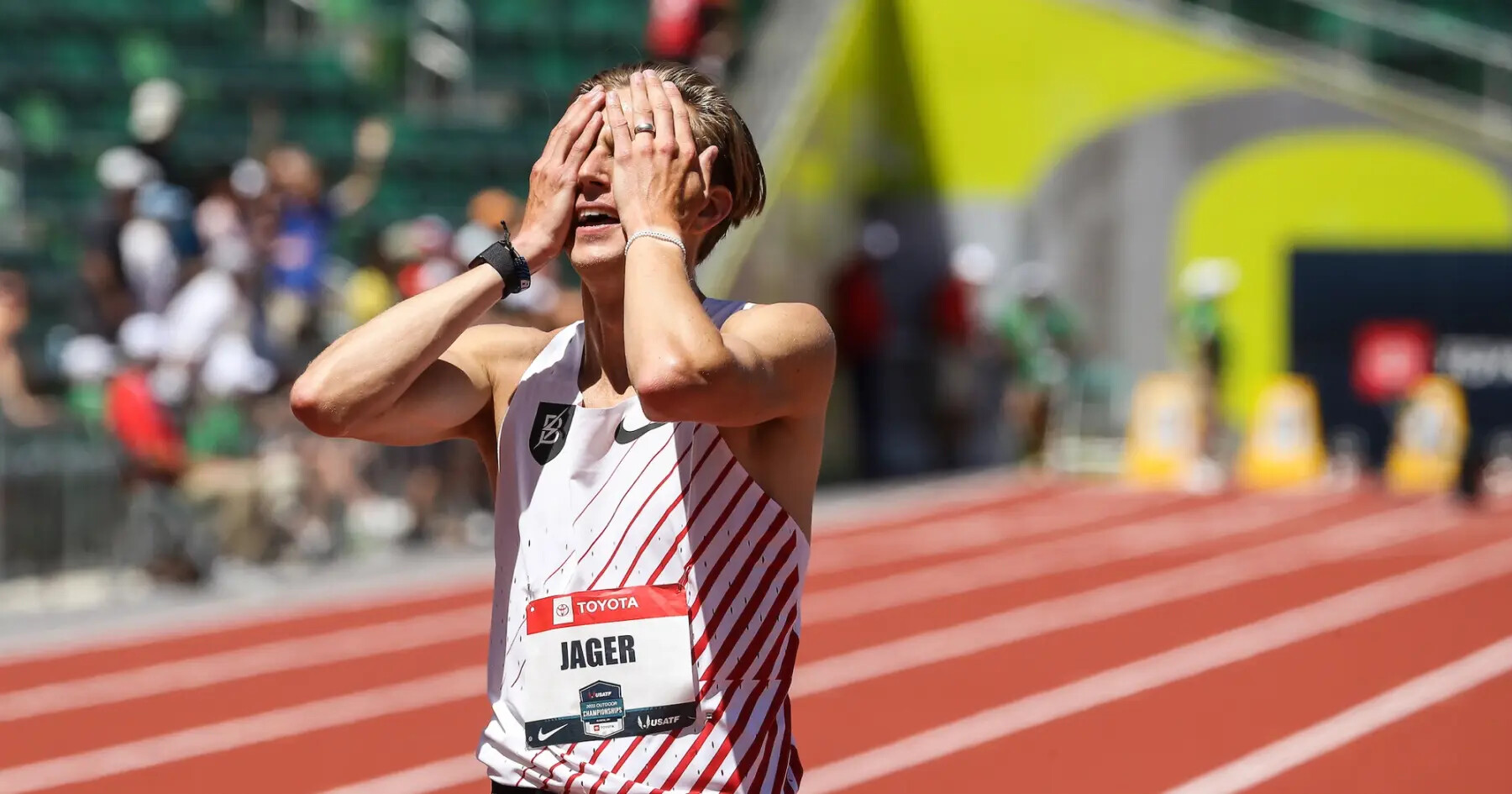
Only Gabby Thomas’ 22.05 from the Paris Diamond League is faster this year by an American woman. Richardson, the 2019 NCAA champion, attempted the double at USAs in both 2019 and 2022, where her highest finish was 8th in the 100m in 2019. She has yet to make a U.S. final in the 200m.
– Reigning U.S. champion Abby Steiner is only running the 200m despite qualifying in both the 100m and the 400m as well. She just ran her season’s best of 22.19 to win the NYC Grand Prix.
– As previously announced, 400m hurdles Olympic champion, World champion and world record holder Sydney McLaughlin-Levrone is running the flat 400m. She plans to make a decision after the U.S. Championships whether she will run the flat 400m (if she qualifies) or defend her 400m hurdles title in Budapest.
– NCAA record holder Britton Wilson, who ran 49.14 to become No. 4 on the U.S. all-time list, will only run the 400m and not the 400m hurdles. She hurdled at last year’s World championships and participated in the 4x400m relay.
MEN’S DISTANCE
– This year’s men’s steeplechase team should have a new look. 2016 Olympic silver medalist Evan Jager is not entered in the steeplechase. He has raced just once this outdoor season. Hillary Bor, the reigning U.S. champion who also owns the fastest steeplechase time by an American this year in 8:11.28, broke his foot earlier this spring and will miss the U.S. Championships. This is the first U.S. team he has missed since 2015. The top returner is Benard Keter, who made the Olympic team in 2021 and the World team in 2022, but he is only the fifth-fastest entrant by seed time.
– For the first time, 2021 U.S. 5000m champPaul Chelimo is entered in both the 5000m and the 10,000m. Chelimo, the 3x global medalist at 5000m, has typically only focused on the shorter event, but after his 27:12.73 performance at the Night of the 10,000m PBs in the U.K. earlier this season, he has decided to contest both events. He’s seeded No. 4 by qualifying time in both events behind Grant Fisher, Woody Kincaid, and Joe Klecker (all also double-entered).
WOMEN’S DISTANCE
– 800m Olympic and world champion Athing Mu entered the 1500m, as previously announced with coach Bobby Kersee. She has the bye to the world championships in the 800m. Her personal best of 4:16.06 is well outside the automatic standard of 4:05.00 and was achieved outside the qualifying window for the championships, but USATF rules allow for significant discretion in accepting entries from the Sports Committee chair.
– Josette Norris and On Athletics Club coach Dathan Ritzenhein have decided to focus solely on the 5000m. Norris ran 14:43.36 at Sound Running’s Track Fest in early May. That’s the second-fastest time by an American woman on the year behind her teammate and training partner Alicia Monson’s 14:34.88 at the Paris Diamond League. Monson is entered in both the 5000m and 10,000m after choosing to only contest the 10,000m last year.
– NC State’s NCAA record holder Katelyn Tuohy will only run the 5000m. Tuohy qualified for NCAAs in both the 1500m and the 5000m but ended up only running the 1500m after an uncharacteristically disappointing performance in the final.
– The Bowerman Track Club’s Elise Cranny has declared for the 1500m, 5000m and the 10,000m. The first round of the women’s 1500m is 19 minutes before the final of the 10,000m on Day 1 of the competition, so Cranny will likely scratch one or more events at a later point.
(06/30/23) Views: 113
Chris Chavez (Citius magazine)
On the track or the road, this workout will help you build strength and speed
If you’ve got an interval session coming up in your training plan, consider trying this descending ladder workout. Starting with 600m repeats to build strength and working your way down to 200s to work on your speed, it’ll help put you on track to achieve your next personal best in a variety of short and mid-distance races.
The workout itself is quite simple–the number of reps in each set increases as the intervals get longer, and you get a slightly longer rest between sets to reset before moving on to the next distance. As the intervals get shorter, the goal is to increase your speed, so aim to run the 600s at your current 5K race pace, the 400s at your 5K goal pace or a bit faster, and the 200s as fast as you can go (800m to 1,500m pace).
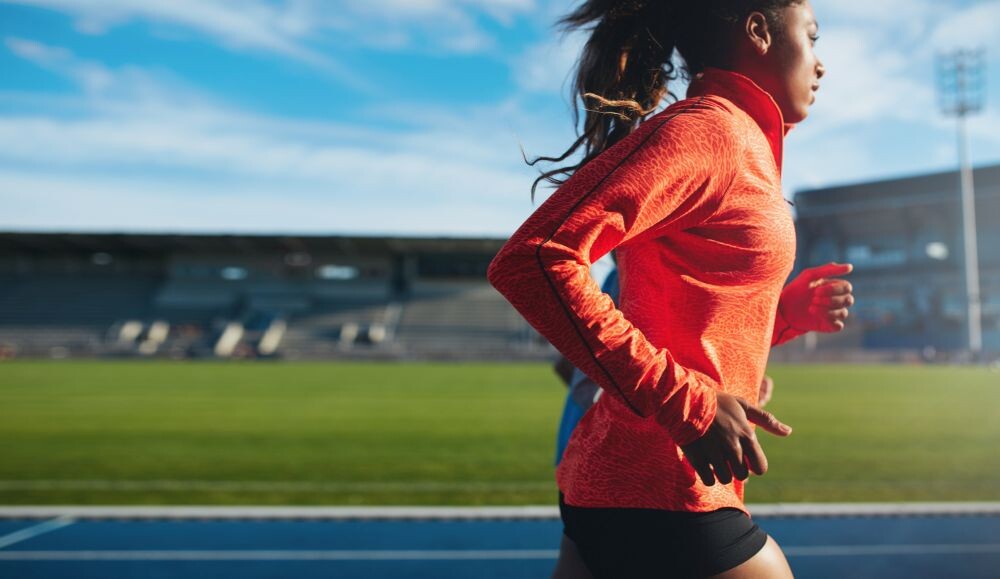
Don’t have a track nearby? Don’t worry–we’ve included a road option as well. Just make sure when you’re on the road that you’re paying attention to pace and cranking up the speed as the intervals get shorter.
The workout
Warmup: 15-20 minute easy jog, followed by form drills and strides
Workout: 600m/1 min rest/600m/2 min rest//400m/1min rest/400 m/1 min rest/400m/2 min rest//200m/1 min rest/200m/1 min rest/200m/1 min rest/ 200m
Road workout: 3 min/1 min rest/3 min/2 min rest//2 min/1 min rest/2 min/1 min rest/2 min/2 min rest//45 sec/1 min rest/45 sec/1 min rest/45 sec/1 min rest/45 sec
Cooldown: 10-15 minute easy jog followed by light stretching and mobility
(06/30/23) Views: 99BRITTANY HAMBLETON (Running Magazine)
Bill Thorn Ends His 53-Year Peachtree Road Race Run Streak This July 4
The 92-year-old is the only runner to have completed the famous 10K every year since it began in 1970.
This year’s running of the historic Peachtree Road Race in Atlanta will mark the end of an era. Bill Thorn, the only person to have run what has become the largest 10K in the world every year since it began in 1970, is ending his 53-year race streak. At 92 years old, Thorn thinks it’s finally time. He’s dealt with balance issues over the past few years, and has been racing with the aid of a walker.
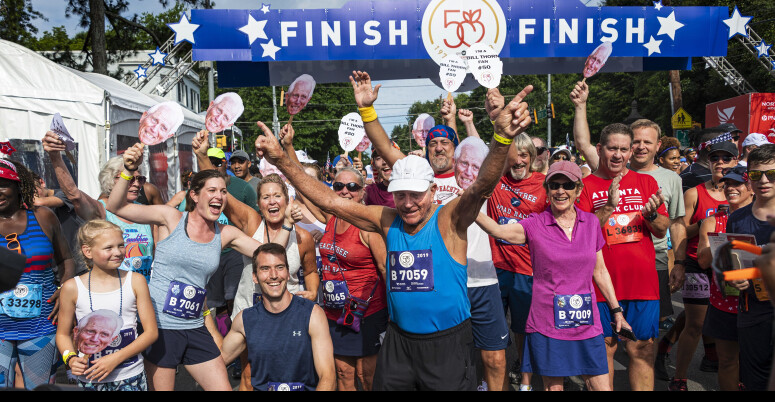
“It’s been really exciting over the years, but there comes a time when you have to let go,” he said in an Atlanta Track Club press statement.
In a year that features the deepest women’s field in the history of the race, including five women who have personal bests faster than the course record of 30:22, it’s not just the elite runners who will be anticipated at the finish line.
On Tuesday, Thorn will be honored as the Peachtree’s Grand Marshal, and he’ll be chauffeured down the 6.2-mile course that he arguably knows better than anyone else in history. Just before the finish in Piedmont Park, he’ll emerge from the vehicle to be celebrated as he crosses the finish line on foot for the last time.
“There is only one way to stop worrying about not finishing, and that is to just be finished,” he said, “I’m going into a new era.”
Thorn has been a lover and booster of running for a long time. He coached athletes across various sports for 64 years, and in 2019, he retired from Landmark Christian School in Fairburn (an Atlanta suburb) where since 1995, he’d led his teams to 42 state championships in football, track, and cross-country.
For many years, Thorn had good company as one of the “Original 110” finishers from the inaugural 1970 road race, but those numbers dwindled over time. He and Don Gamel were the only two who ran every year through 1992, and by 1993, Thorn was carrying that torch alone.
Every Fourth of July, he’s shown up on the start line and hustled up the infamous “Cardiac Hill” in the stifling summer heat and Georgia humidity, whether he was coping with an ankle sprain, heel gash, or something as serious as prostate cancer. In his younger years, he raced his fastest times in the 39-minute range, but over time, the race became more about having fun with his family—his 30-year-old granddaughter, Kenzie Bayman, was his “race day buddy” for several years. The senior runner has been completing the race virtually since the COVID-19 pandemic, running a carefully measured route in his neighborhood.
On the Peachtree’s 50th anniversary in 2019, Thorn said, “It could’ve been just a fad, but as you go along through the years, people like Julia [Emmons, the former Atlanta Track Club Executive Director] says to me every once in a while to ‘keep going’ and that was really encouraging, and so it just became a year after year thing.”
This year, Thorn will be honored with his name engraved on the Peachtree Cup, an honor that up until now has been reserved for race champions, including Aliphine Tuliamuk, Stephanie Bruce, and Jeff Galloway. This distinction is all his own. “No one else will ever be able to say they did the first 50,” he said.
You can stream the AJC Peachtree Road Race on the 11Alive YouTube channel on Tuesday for free. The elite women will start at 6:50 a.m. ET and the elite men will set off at 7 a.m. ET.
(07/02/23) Views: 86Runner’s World
Sixth fastest marathoner Ekiru latest Kenyan athlete suspended over doping
Kenyan marathoner Titus Ekiru has been provisionally suspended by Athletics Integrity Unit (AIU) for the presence of a prohibited substances (Triamcinolone Acetonide and metabolite; Pethidine and metabolite).
The AIU said on Monday that the 31-year-old marathoner faces two charges for doping and two more for tampering.
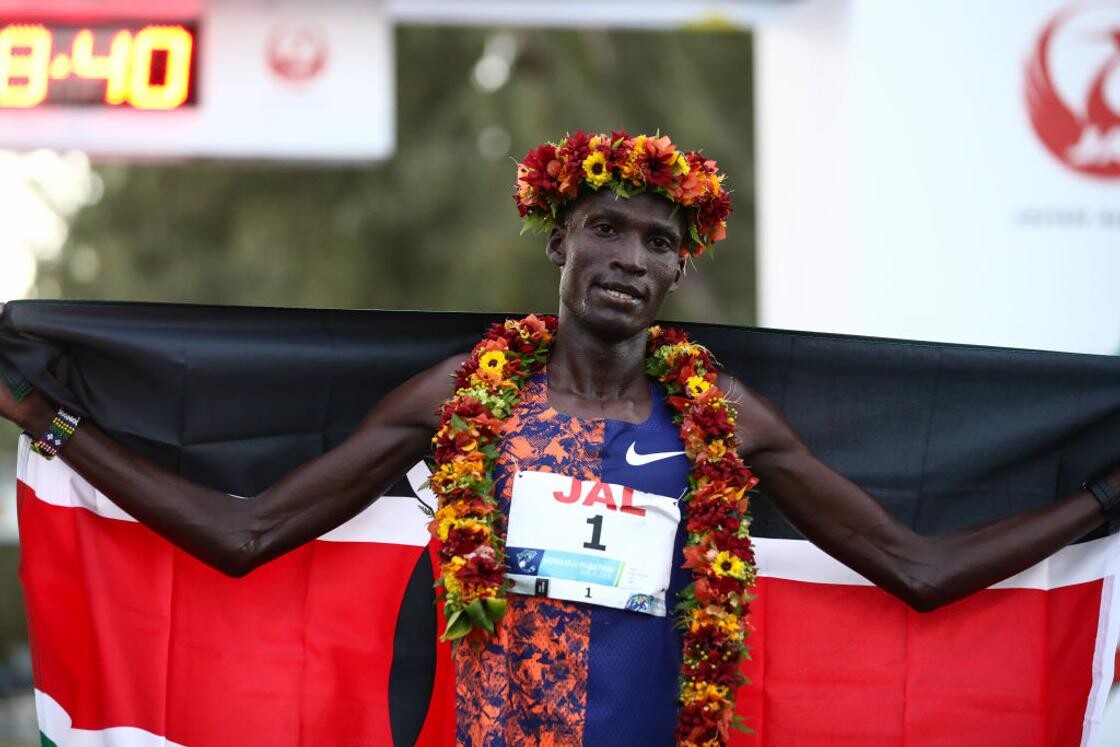
The sixth-fastest marathoner of all time, Ekiru now faces a 10-year ban but has the right to defend himself before the Disciplinary Tribunal.
Ekiru ran a time of 2 hours, 2 minutes, 57 seconds to win the Milan Marathon in May 2021 to place him in sixth in history. The current record is 2:01:09 by Eliud Kipchoge in Berlin last year.
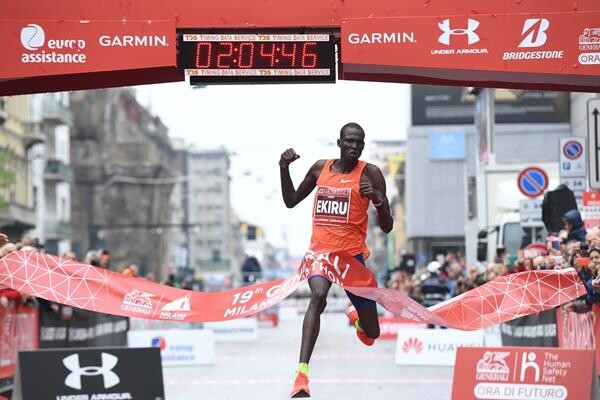
Ekiru tested positive at the Italian race for the corticosteroid triamcinolone acetonide, which is prohibited for use in-competition unless an athlete is granted an exemption for medical use.
The AIU said a first investigation into the Milan positive test was closed, then reopened when Ekiru also tested positive for a synthetic opioid while winning in Abu Dhabi in November 2021.
“The athlete tested positive for pethidine after winning in Abu Dhabi, and again claimed the outcome resulted from legitimate medical treatment,” the AIU said.
Ekiru was provisionally suspended one year ago and was later charged with suspected doping violations in March and April, the AIU said.
Two more charges of tampering have now been added for the runner “submitting falsified medical explanations and documentation to the AIU for both positive tests,” the AIU said.
(07/03/23) Views: 85Samuel Nganga
Chepngetich, Hassan and Sisson to clash at Chicago Marathon
Ruth Chepngetich returns to defend her title at the Bank of America Chicago Marathon, a World Athletics Platinum Label road race, and will face a field that features London Marathon winner Sifan Hassan and US record-holder Emily Sisson.
Chepngetich won last year’s race in 2:14:18 – just 14 seconds shy of the world record and the second-fastest women’s marathon performance of all time.
Kenya’s 2019 world champion will be back in Chicago on the hunt for her third consecutive victory on October 8, following her inaugural win in the US city in 2021, when she ran 2:22:31.
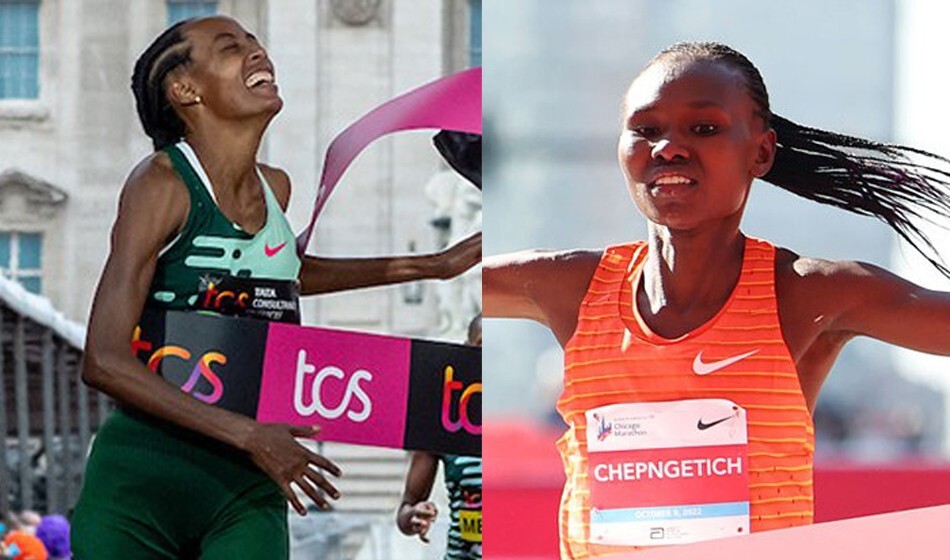
“I am planning to defend my title and improve my time,” said Chepngetich. “There's no better race in the world than the Bank of America Chicago Marathon.”
To do so, she will have to defeat double Olympic gold medallist Hassan of the Netherlands. Hassan made her marathon debut in London in April when, despite stopping to stretch twice, she closed a 25-second gap on the leaders to win and set a national record of 2:18:33.
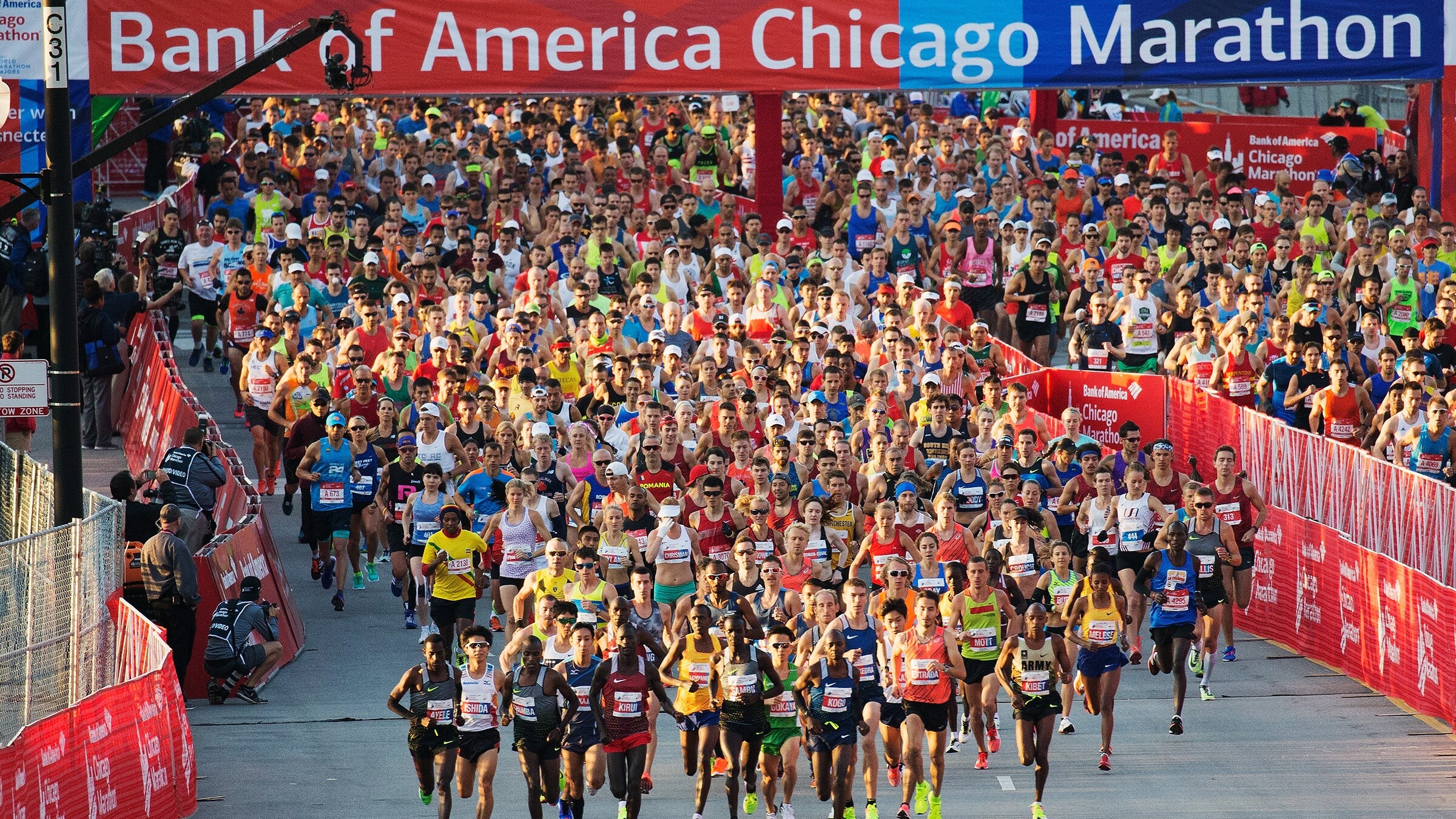
Hassan plans to compete on the track at the World Athletics Championships Budapest 23, less than six weeks before returning to the roads to race in Chicago.
“At the moment, my focus is on the World Championships in Budapest, so my marathon preparation will be very short, but as most people know, I like to be challenged,” said Hassan.
“I will see how my body responds and how my mind handles it. The good thing is that I have the experience from London so I'm looking forward to Chicago, to see what the marathon can teach me this time.”
Unlike Hassan, Sisson will skip the track season to focus on getting ready for Chicago. Last year’s runner-up, Sisson finished in 2:18:29, demolishing the US record by 43 seconds. Sisson, who also holds the US record in the half marathon, said the deep field improves her chances of running even faster this year.
“Chicago is where I set the American marathon record last year,” said Sisson. “I am really looking forward to coming back for another great race in October.”
Legendary matchups have long made for thrilling finishes in Chicago.
In 1985, a gruelling duel between Olympic champion Joan Benoit Samuelson and then world record-holder Ingrid Kristiansen saw Benoit Samuelson outlast her Norwegian competitor and set a US record.
In 2002, British world champion Paula Radcliffe defeated Kenya’s Catherine “The Great” Ndereba and shattered Ndereba' world record in the process. And in 2017, three-time Olympic gold medallist Tirunesh Dibaba took down rising star and future world record-holder Brigid Kosgei.
Chepngetich and Hassan have clashed once before, in the 2018 Copenhagen Half Marathon where Hassan broke the European record with 1:05:15 in what was her first serious attempt at the distance and Chepngetich finished fifth in 1:07:02.
The sole clash between Chepngetich and Sisson so far came at last year’s Chicago Marathon, while Hassan and Sisson have raced each other on four occasions, in the 5000m and 10,000m, with the record so far 4-0 in Hassan’s favor.
(07/04/23) Views: 75William Njuguna


